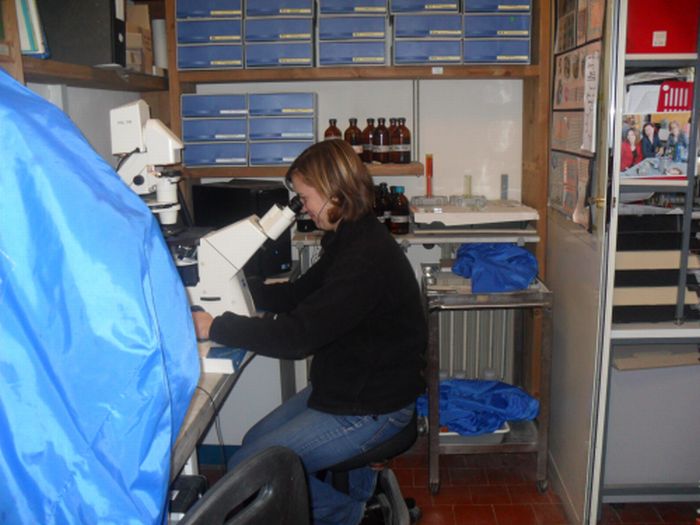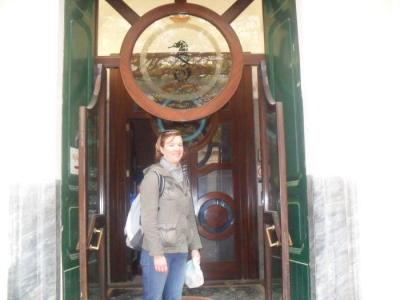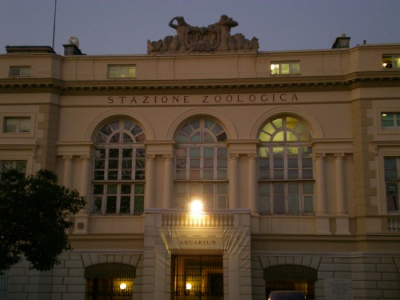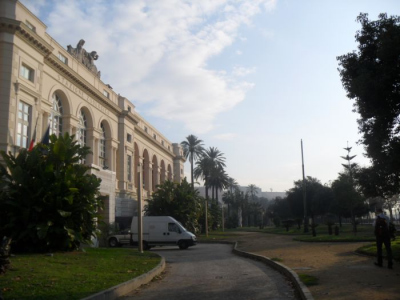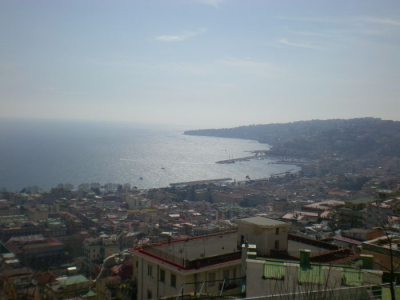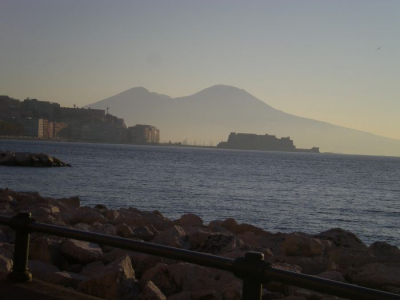Die Inhalte dieser Seite sind leider nicht auf Deutsch verfügbar.
Seitenpfad:
- Graduate School GLOMAR
- PhD student reports
- Research Placements
- Isabelle Schulz
Isabelle Schulz
Report of GLOMAR PhD student Isabelle Schulz about her research stay at the Stazione Zoologica Anton Dohrn, Naples, Italy from October - December 2011
The Stazione Zoologica Anton Dohrn in Naples Italy was my host Institution from October until December 2011. The Division of Ecology and Evolution of Plankton is one of the leading centers for plankton ecology and the application of molecular tools for assessing phytoplankton taxonomy. Two senior scientists from the Stazione: Dr. Maria Grazia Mazzocchi (zooplankton ecology) and Dr. Marina Montresor (phytoplankton ecology and taxonomy), participated in LOHAFEX and are leading experts in their respective fields. I have been invited by these scientists to collaborate with them on analyzing the samples, working up the data and interpreting the results of the LOHAFEX experiment.
LOHA is the hindi word for iron and FEX stands for Fertilization Experiment. LOHAFEX is an Indo-German ocean experiment to test the effects of iron fertilization on the ecology and carbon cycle of the Southern Ocean. It has been initialized by the German Ministry for Research and was carried out by the Alfred Wegener Institute for Polar and Marine research (AWI), Germany. The experiment is a cooperative project between the AWI and the National Institute of Oceanography (NIO), India.
During my research stay at the Stazione Zoologica I concentrated on the analysis of samples from the grazing experiments. The dilution method according to Landry and Hassett (1982) was used on board in order to estimate the impact of Micro- and nanozooplankton grazing during the experiment. Samples taken from these grazing experiments are essential to evaluate the structural and functional responses of primary consumers and their predators to the spatial and temporal variations of food quantity and quality. The aim was to gain data on gross growth rates from the control bottles without zooplankton and mortality rates of phytoflagellates from the bottles with zooplankton. These data will provide the background for overall assessment of top-down control on the phytoplankton assemblage during LOHAFEX.
The Division of Ecology and Evolution of Plankton at the Stazione has been the ideal place for me to deepen my knowledge about plankton ecology. I would like to thank GLOMAR for giving me the opportunity to work with Dr. Maria Grazia Mazzochi and Dr. Marina Montresor.
LOHA is the hindi word for iron and FEX stands for Fertilization Experiment. LOHAFEX is an Indo-German ocean experiment to test the effects of iron fertilization on the ecology and carbon cycle of the Southern Ocean. It has been initialized by the German Ministry for Research and was carried out by the Alfred Wegener Institute for Polar and Marine research (AWI), Germany. The experiment is a cooperative project between the AWI and the National Institute of Oceanography (NIO), India.
During my research stay at the Stazione Zoologica I concentrated on the analysis of samples from the grazing experiments. The dilution method according to Landry and Hassett (1982) was used on board in order to estimate the impact of Micro- and nanozooplankton grazing during the experiment. Samples taken from these grazing experiments are essential to evaluate the structural and functional responses of primary consumers and their predators to the spatial and temporal variations of food quantity and quality. The aim was to gain data on gross growth rates from the control bottles without zooplankton and mortality rates of phytoflagellates from the bottles with zooplankton. These data will provide the background for overall assessment of top-down control on the phytoplankton assemblage during LOHAFEX.
The Division of Ecology and Evolution of Plankton at the Stazione has been the ideal place for me to deepen my knowledge about plankton ecology. I would like to thank GLOMAR for giving me the opportunity to work with Dr. Maria Grazia Mazzochi and Dr. Marina Montresor.



